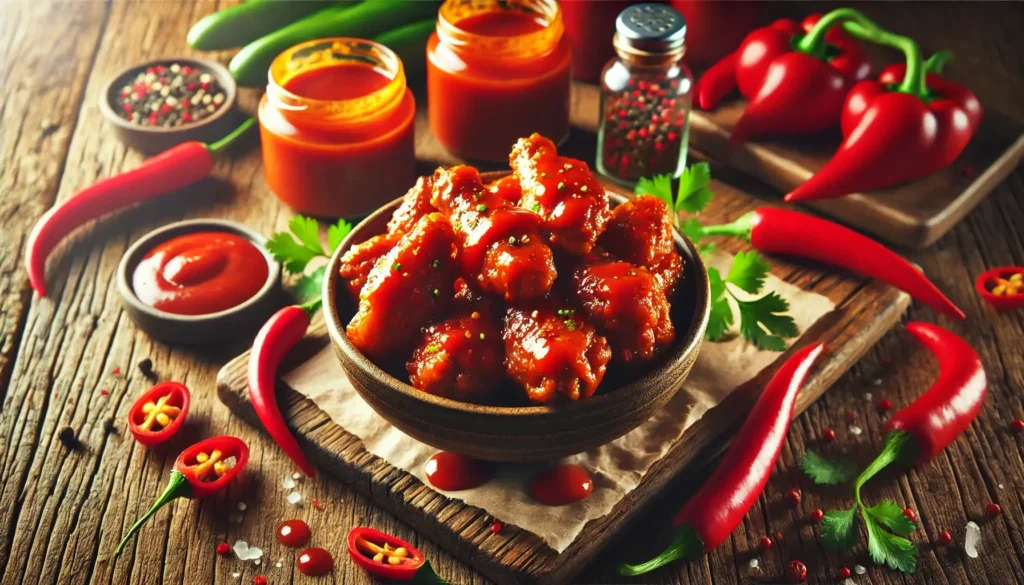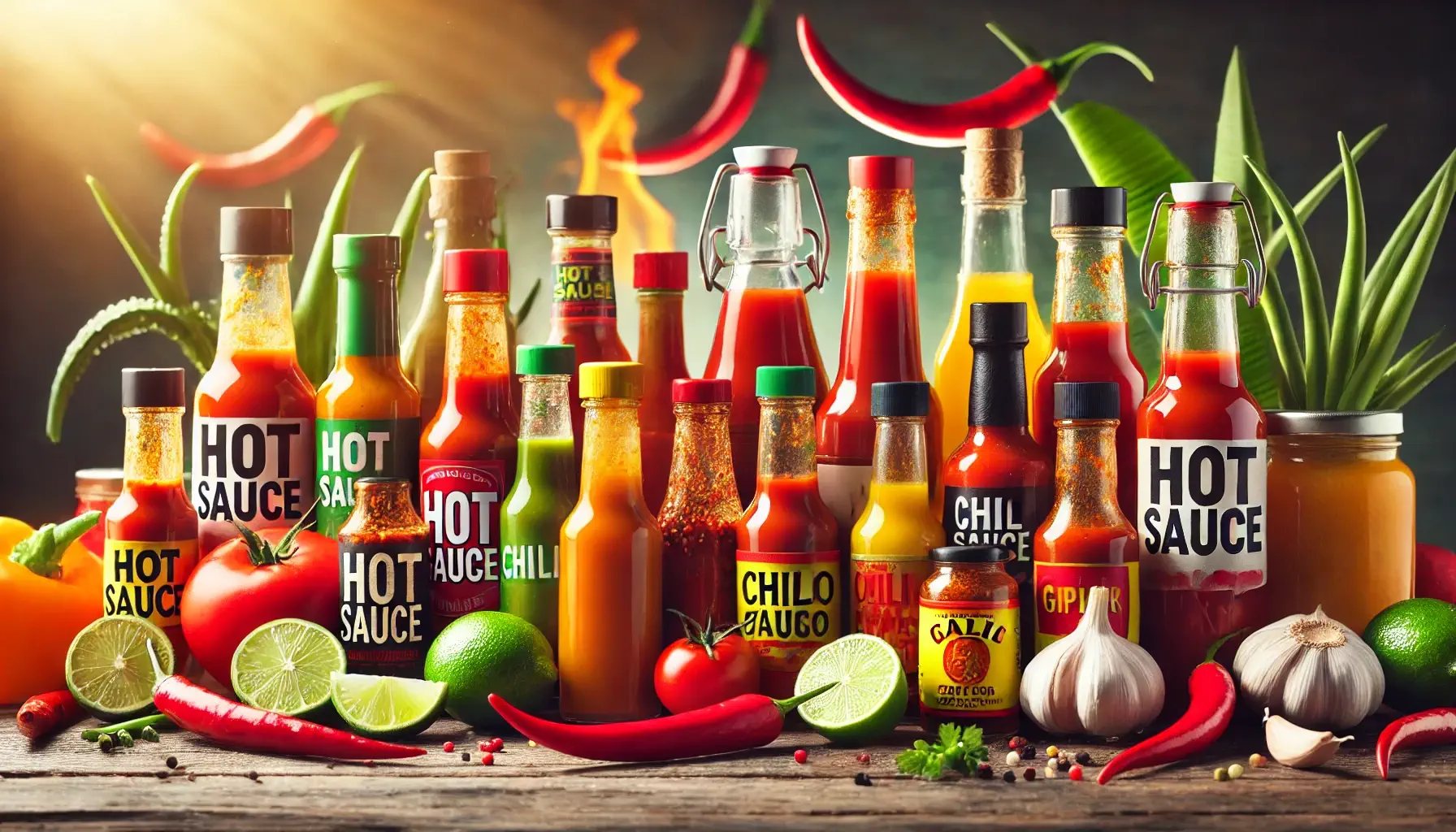In the diverse world of culinary delights, few condiments can match the versatility and bold flavor of hot sauce. Whether you’re a spice enthusiast or someone looking to add a kick to your meals, hot sauce stands out as the perfect choice to elevate any dish. This article delves into why hot sauce is an indispensable addition to your kitchen, exploring its benefits, varieties, and tips for incorporation into everyday meals.
Table of Contents
- Introduction to Hot Sauce
- Health Benefits of Hot Sauce
- Varieties of Hot Sauce
- Culinary Uses of Hot Sauce
- Hot Sauce and Cultural Diversity
- Choosing the Right Hot Sauce for Your Taste
- Storage and Shelf Life of Hot Sauce
- Conclusion
Introduction to Hot Sauce
Hot sauce, a staple in kitchens worldwide, is more than just a spicy addition to food—it’s a cultural phenomenon. Originating from various regions, each type of hot sauce carries its unique flavor profile, heat level, and history. From the fiery heat of habanero peppers to the tangy zest of vinegar-based sauces, hot sauce offers a spectrum of flavors that can transform ordinary meals into extraordinary culinary experiences.
Health Benefits of Hot Sauce
Incorporating hot sauce into your diet isn’t just about enhancing flavor; it also brings several health benefits:
1. Rich in Vitamins and Minerals
Hot sauces made from chili peppers are high in vitamins A and C, which are essential for immune function, skin health, and vision.
2. Boosts Metabolism
Capsaicin, the active component in chili peppers, is known to boost metabolism, aiding in weight management by increasing the rate at which the body burns calories.
3. Anti-Inflammatory Properties
Capsaicin also possesses anti-inflammatory properties, which can help reduce inflammation and alleviate pain.
4. Heart Health
Regular consumption of hot sauce may improve heart health by lowering bad cholesterol levels and reducing the risk of heart disease.
5. Antioxidant Benefits
Chili peppers contain antioxidants that combat free radicals, helping to prevent cellular damage and reduce the risk of chronic diseases.
Varieties of Hot Sauce
The world of hot sauce is vast and varied, with each type offering distinct flavors and heat levels. Here are some popular varieties:
1. Sriracha
Originating from Thailand, Sriracha is a versatile hot sauce known for its balance of heat, sweetness, and garlic flavor. It’s made from chili peppers, garlic, vinegar, sugar, and salt, making it a favorite for a wide range of dishes.
2. Tabasco
Tabasco sauce, from Louisiana, is one of the most recognized hot sauces globally. Made primarily from tabasco peppers, vinegar, and salt, it offers a sharp, tangy heat that’s perfect for enhancing meats, eggs, and soups.
3. Cholula
Hailing from Mexico, Cholula is renowned for its complex flavor profile, combining piquín and arbol peppers with spices. Its moderate heat and rich taste make it ideal for tacos, grilled meats, and sandwiches.
4. Frank’s RedHot
Frank’s RedHot is famous for being the key ingredient in Buffalo wings. Made from cayenne peppers, vinegar, and garlic powder, it provides a mild to moderate heat that’s perfect for dipping sauces and marinades.
5. Homemade Hot Sauces
For those who prefer a personalized touch, homemade hot sauces offer endless possibilities. By experimenting with different chili peppers, vinegars, and spices, you can create a unique sauce tailored to your taste preferences.

Culinary Uses of Hot Sauce
Hot sauce is incredibly versatile and can be used in various ways to enhance your meals:
Enhancing Breakfast
Start your day with a kick by adding hot sauce to your morning eggs, avocado toast, or breakfast burritos. A few drops can transform a simple omelet into a flavorful masterpiece.
Spicing Up Lunch
Whether it’s a sandwich, salad, or soup, hot sauce can add depth and heat to your midday meals. Try drizzling it over a Caesar salad or mixing it into a creamy tomato soup for an extra zing.
Elevating Dinner
From grilling meats to seasoning vegetables, hot sauce is a perfect companion for dinner. Use it as a marinade for chicken, a topping for steaks, or a seasoning for roasted vegetables to elevate your evening meals.
Delicious Snacks and Appetizers
Hot sauce isn’t limited to main courses. It can be used to spice up snacks like nachos, popcorn, or even dips like guacamole and hummus, making your appetizers more exciting and flavorful.
Hot Sauce and Cultural Diversity
Hot sauce plays a significant role in various cultures, each bringing its unique twist to this spicy condiment:
- Mexican Cuisine: Features a wide array of hot sauces like Cholula and Valentina, which are integral to dishes like tacos, enchiladas, and quesadillas.
- Asian Cuisine: Sriracha and other chili-based sauces are staples in Thai, Korean, and Chinese dishes, adding heat and complexity to sauces, stir-fries, and marinades.
- American Cuisine: Buffalo wings and Tex-Mex dishes prominently feature hot sauces like Frank’s RedHot and Tabasco, showcasing the American love for spicy flavors.

Choosing the Right Hot Sauce for Your Taste
With so many options available, selecting the right hot sauce can be overwhelming. Here are some tips to help you choose:
1. Determine Your Heat Preference
Hot sauces range from mild to extremely spicy. Consider your tolerance for heat and choose a sauce that complements your taste without overwhelming your palate.
2. Consider the Flavor Profile
Different hot sauces offer varying flavors beyond just heat. Some are tangy, others smoky, and some have sweet undertones. Choose a sauce that enhances the flavors of your dishes.
3. Check the Ingredients
Opt for hot sauces with natural ingredients and minimal preservatives. This not only ensures better flavor but also healthier consumption.
4. Experiment with Different Types
Don’t be afraid to try various hot sauces to discover your favorites. Sampling different brands and styles can help you find the perfect match for your culinary needs.
Storage and Shelf Life of Hot Sauce
Proper storage ensures that your hot sauce remains fresh and flavorful:
1. Refrigeration
Most hot sauces benefit from refrigeration after opening, which helps maintain their flavor and prolongs shelf life.
2. Avoid Direct Sunlight
Store hot sauce in a cool, dark place to prevent the degradation of its ingredients and to maintain its quality.
3. Check Expiry Dates
Always check the expiry date and consume the sauce within the recommended period to ensure optimal taste and safety.
Conclusion
Hot sauce is undeniably the perfect choice for those looking to add excitement and depth to their culinary creations. Its versatility, health benefits, and rich cultural significance make it a must-have condiment in any kitchen. Whether you’re a seasoned spice lover or a curious foodie, incorporating hot sauce into your meals can transform everyday dishes into extraordinary experiences. So, explore the diverse world of hot sauces, find your favorites, and let the flavorful adventure begin!

